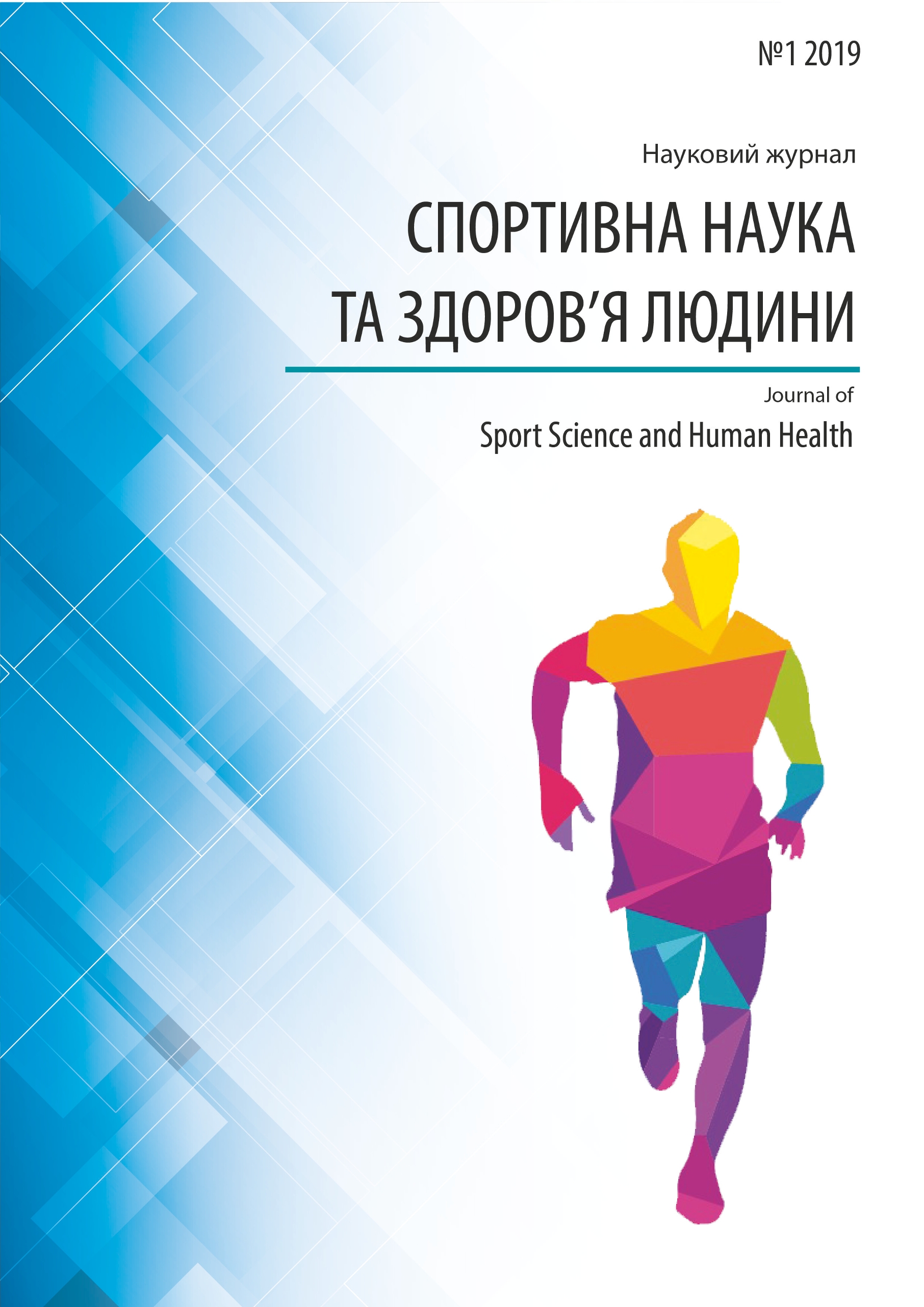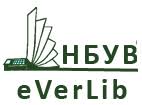ФІЗИЧНА РЕАБІЛІТАЦІЯ ДІТЕЙ ШКІЛЬНОГО ВІКУ З МІОПІЄЮ І–ІІІ СТУПЕНЮ
DOI:
https://doi.org/10.28925/2664-2069.2019.1.15Ключові слова:
діти, школярі, фізичний розвиток, психоемоційний стан, фізичне виховання, фізична реабілітація.Анотація
Фізична реабілітація дітей з міопією є складним процесом і потребує тривалого, системного і поетапного використання комплексу засобів для відновлення гостроти зору. Зазвичай для цього використовуються кінезіотерапія (дихальні та твіст вправи), пальцева та артикуляційна гімнастики, методи Оннурі терапії, рефлексотерапії, апаратної фізіотерапії тощо, що в комплексі призводить до позитивного ефекту та відновлення зорових аналізаторів. Проте, при прогресуючих формах короткозорості ці фізичні методи не завжди є ефективними.
Методи. Літературні джерела (наукові статті, підручники, посібники, автореферати дисертаційних досліджень), відібрані з електронних баз даних Національної бібліотеки України ім. В.І. Вернадського, Російської наукової електронної бібліотеки «eLibrary», Web of Science, PubMed, PEDro та інших.
Мета – теоретичне обґрунтування необхідності та суті фізичної реабілітації при міопії, аналіз та узагальнення відомостей науково-методичної літератури щодо вивчення впливу фізичної реабілітації на фізичний розвиток та психоемоційний стан школярів з міопією різного ступеню.
Результати. За літературними джерелами встановлено, що зростання випадків короткозорості у школярів пов’язане насамперед зі зростанням зорових навантажень. Головною патогенетичною ланкою набутої міопії є розтягнення склери. У дітей, хворих на набуту короткозорість, зменшення товщини рогівки поєднується зі збільшенням її горизонтального діаметра й довжини передньо-задньої осі ока, що свідчить про розтягнення рогової оболонки ока. Зменшення товщини рогівки супроводжується зниженням її чутливості від 19 % до 57 % в залежності від ступеня захворювання й зменшенням ригідності зовнішньої оболонки ока. Зменшення товщини рогівки є одним з об’єктивних критеріїв прогресування короткозорості, що передбачає включення кератопахіметрії у комплекс обов’язкових досліджень хворих на це захворювання для визначення раціональної тактики лікування. Діти з міопією із зменшенням товщини рогівки становлять групу ризику у відношенні розвитку дистрофії сітківки.
Висновки. Короткозорість є актуальною медико-соціальною проблемою сьогодення. Фізична реабілітація таких дітей є складним і тривалим процесом, що потребує системного поетапного використання різних її засобів.
Посилання
Agayev FB, Shukurova AR. Comparative assessment of the factors and risk of myopia in children. International medical journal Kharkov. 2010; 16(3): 41-44.
Akhmadullina IA. Correction of the physical development of visually impaired students of secondary specialized educational institutions. Theory and practice of physical culture. 2009; 12: 76-80.
Akhmadullina IA, Kuznetsova ZM. The program for the correction of the physical development of visually impaired students at secondary specialized educational institutions. Omsk Scientific Herald, 2010; 91(5): 186-189.
Aprelev AE, Kirilichev AI, Nikonenko MA, Nikitina EV. Reflexotherapy in the rehabilitation treatment of patients with acquired myopia. Bulletin of restorative medicine. 2009; 1: 61–63.
Aslan UB, Calik BB, Kitiş A. The effect of gender and level of vision on the physical activity level of children and adolescents with visual impairment. Res Dev Disabil. J. 2012; 33(6): 1799-804.
Atasavun Uysal S, Düger T. Visual perception training on social skills and activity performance in lowvision children Scandinavian. Journal of Occupational Therapy. 2012; 19: 33-41.
Avetisov ES. Myopia. Moscow: Medicine, 2002. 288 c.
Alexander F. Psychosomatic medicine it's principles and applications М: 2002. 352.
Bates W.H. Better eyesight without glasses. New Delhi: Orient paperbacks. 1981. 199.
Belyaev VS, Kadaneva LN. Exercises recommended for the correction of the health of schoolchildren. Physical education at school. 2011;04:18-20.
Bismak EV. Features of the method of therapeutic physical culture with myopia among students of special medical groups. Slobozhansky sports-science bullet. 2007; 12: 218-221.
Cochereau A. Screening for visual disorders in pre-primary school. Soins. Pediatr. Pueric. 2011; 261: 24–25.
Dolgova YS. Means of physical rehabilitation of children with visual pathology. [Internet]. Medical newspaper. Professional Medical Edition. 2012; 5. Available from: www. mgzt. ru (1.03.2016).
Ethan D., Basch C. E., Platt R. Implementing and evaluating a school-based program to improve childhood vision. J. Sch. Health. 2010;7: 340–345.
Epidemic myopia? Disease of civilization? And some 200 years ago there were more farsighted ... [Internet]. Available from: www.hnb.com.ua (6.03.2016).
Fintz AС, Gottenkiene S, Speeg-Schatz C. Quality of life of visually impaired adults after low-vision intervention. А pilot study. J Fr Ophtalmol. 2011; 34(8): 526–31.
Gospodarova LV. Experience of using Su Jok therapy in ophthalmology. Onnuritherapy. 2003; 13: 77-78.
Gurova EV. Features of the adaptive reactions of the body to physical well-being of physical activity in children of 8–10 years old with visual impairment. Theory and practice nat. culture. 2006; 8: 45-48.
Hoshang Khan Ahmedi, Soldatov AM. The sensitivity and thickness of the cornea with progressive myopia. Ophthalmology magazine. 2001; 6: 42-45.
Hoshang Khan Ahmedi. Thesis for the degree of candidate of medical sciences in the specialty 14.01.18 eye diseases. Institute of Eye Diseases and Tissue Therapy. V.P. Filatov. AMS of Ukraine. Odessa: 2002; 21 p.
Konstantopoulos A. Near work, education, family history, and myopia in Greek conscripts Eye. 2008; 4(22): 542–546.
Lin Z, Vasudevan B, Jhanji V, Gao TY, Wang NL, Wang Q, Wang J, Ciuffreda KJ, Liang YB. Eye exercises of acupoints: their impact in refractive error and visual symptoms in Chinese urban children. BMC Complementary and Alternative Medicine. 2013; 13: 306. DOI: 10.1186/1472-6882-13-306.
Livado EI. The role of exercise in preventing the progression of myopia. Tez. report First All-Union. conf. on children's ophthalmology. Moscow: Medicine, 1976: 126-129.
Logan N.S., Davies L.N., Mallen E.A., Gilmartin B. Ametropia and ocular biometry in a U.K. university student population. Optom. Vis. Sci. 2005; 172 (82), 4:261–266.
Method of rehabilitation of patients with myopia. Patent No. 2339410 Russia: МПК (51) A61M 21/00 / Rotov AV, Rotov VA, № ru 2006 115195/14, announced 02.05.2006, published on 27.11.2008, Bulletin No. 54.
Morgan I. How genetic is school myopia? Prog Retin Eye Res. 2005; 24: 1-38.
Mukhin VM. Physical rehabilitation. Kyiv: Olympics Literature; 2000. 424 p.
Ore L., Tamir А., Stein N., Cohen-Dar M. Reliability of vision screening tests for school children. J. Nurs. Scholarsh. 2009; 3: 250–259.
Pieczyrak D. Screening of selected parameters of visual system in children at the age of 6 to 10 in Great Poland area. Klin. Oczna. 2010; 4/6 (112): 37–41.
Rapoport IK. State of health of modern preschool children. Kyiv: Health of preschool child. 2008; 3: 2-8.
Redkovets TG, Romman Heisam DM. Modern view on the problem of physical rehab with myopia. Physical education of students. 2012; 5: 85-91.
Redkovets TG, Romman Heisam DM. About the effect of the program of physical rehabilitation at adolescents, students of general education schools, at the polyclinic stage. Naukovy chapis NPU іmenі MP Dragomanov. 2014; 3(46) 77-87.
Reshetnikova AV. Medical sociological monitoring. Moscow. Medias; 2013. 796 p.
Rikov СО, Медведовська НВ, Збітнева СВ. Monitoring of regional peculiarities of the prevalence of eye diseases and adjuvant apparatus among the Ukrainian population. Naukovy chapis NPU іmenі MP Dragomanov. 2012; 1: 95-96.
Ruban LA. Features of the attitude to their health of students of the “Human Health”. Zbіrnik articles І of the International Scientific and Practical Internet Conference “Actual Problems of the Medical and Biological Concern of Physical Culture, Sports and Physical Rehabilitation,” (23 april 2015). Kharkiv, 2015: 124-134.
Sermeev BV. Physical education of children with visual impairments. Kiev: Health; 1987. 112 p.
Serdyuchenko VI, Dragomiretskaya EI, Nostopyreva EI, Golovko AI. Somatic status and physical development of children and adolescents as risk factors for the development of myopia. Ophthalmology magazine. 2002; 2: 4-8.
Shargorodskaya IV, Karpinets BB. Diagnosis and treatment of myopia. Collection of scientific works of employees NMAPE P.L. Shupika. 2007; 16(4) : 836-847.
Shukla A.V. Clinical optics primer for ophthalmic medical personnel: a guide to laws, formulae, calculations, and clinical applications Thorofare. SLACK Inc. 2009; 250.
Taylor D, Hoyt K. Pediatric Ophthalmology. Moscow: BINOMIAL, 2007. 248 p.
Vivien Cherng-Hui Yip. The Relationship between Growth Spurts and Myopia in Singapore Children. IOVS. 2012; 53(13): 7961-7966.
Vision screening in infants, children and youth. Paediatr. Child Health. 2009; 4(14): 246–251.
Walline JJ, Lindsley K, Vedilla SS. Myopia. Treatments for Kids Come Up Short or Cause Side Effects. Review of Ortometry. 2012; 149(1): 316.











